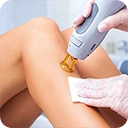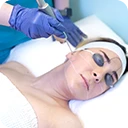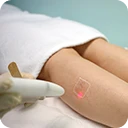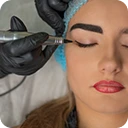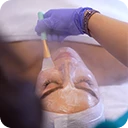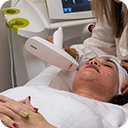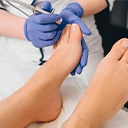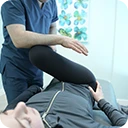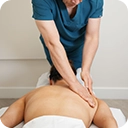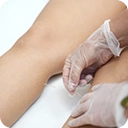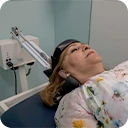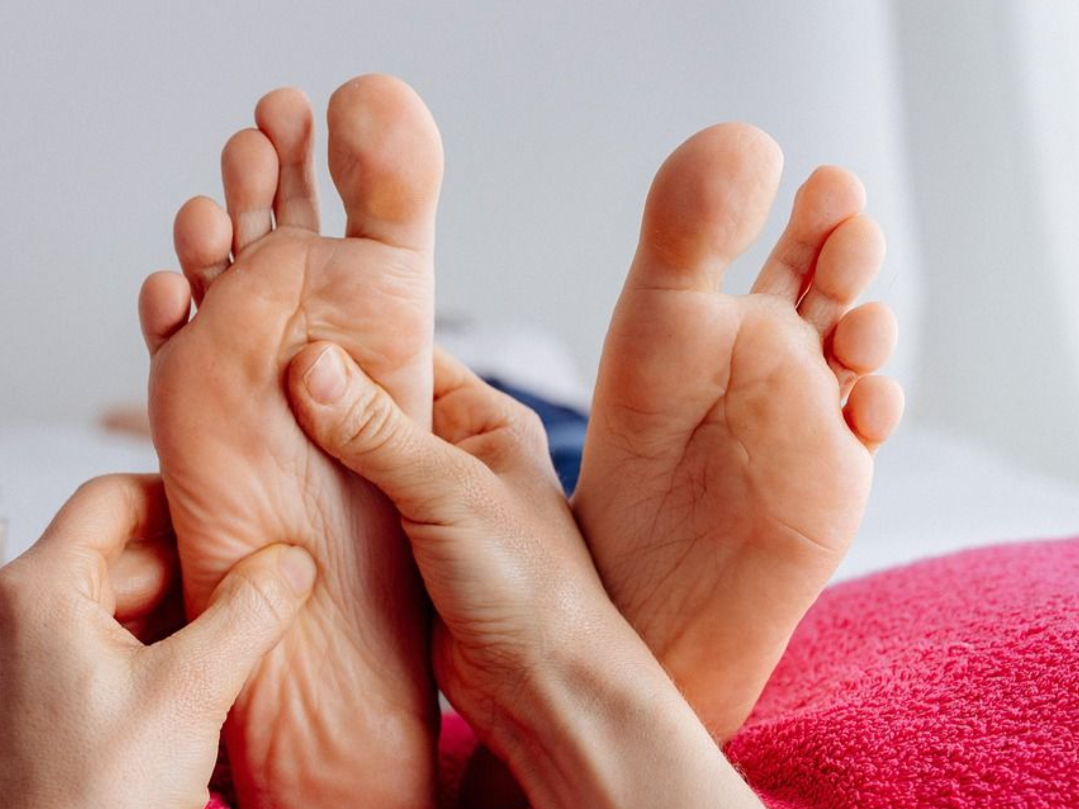Bunions, medically referred to as hallux valgus, are bony protrusions that develop at the base of the big toe, precisely where the toe meets the main part of the foot at the metatarsophalangeal (MTP) joint. This condition occurs when the big toe gradually drifts out of its natural alignment, beginning to angle towards the other toes. The shift in alignment causes the joint at the base of the big toe to protrude outward, resulting in a visible bump that often becomes tender and swollen over time.
Bunions are not a one-size-fits-all condition; several types exist. Congenital bunions are present at birth and tend to stem from hereditary structural foot differences. Juvenile or adolescent bunions, as the name suggests, affect children and teenagers, often becoming apparent before the age of 18. Another variation, known as a tailor’s bunion or bunionette, forms on the outside of the foot at the base of the little toe. This type is also related to pressure and alignment issues, though it affects a different part of the foot.
Bunions are surprisingly common, with estimates indicating that about one-third of Americans experience them at some point. It’s important to distinguish bunions from other foot deformities, such as hammertoes or osteoarthritis, as each has distinct causes and treatments. Understanding the basics and the different types of bunions lays the foundation for recognizing symptoms and seeking appropriate care.
Recognizing the Signs: Common Symptoms and Risk Factors
Bunions can manifest with a range of symptoms, some of which may develop gradually over time. One of the most telling signs is a noticeable bony bump at the base of the big toe. This area can become increasingly painful, especially when walking or wearing tight-fitting shoes. Swelling, redness, and even discoloration are common around the joint, often accompanied by a burning sensation or stiffness, making it difficult to bend the toe naturally.
Beyond the primary discomfort, bunions can lead to a host of secondary issues. The constant friction and pressure may result in the formation of corns and calluses, particularly where the toes overlap or rub against shoes. In some cases, hammertoes—where one of the smaller toes becomes permanently bent—can develop due to altered foot mechanics. Numbness around the big toe can also occur if nerves become compressed.
Footwear often becomes a challenge for those with bunions, as certain styles exacerbate pain and limit mobility. People may find themselves unable to wear their favorite shoes or participate in preferred activities due to discomfort.
Several risk factors increase the likelihood of developing bunions. Females are more commonly affected, possibly due to footwear choices and differences in foot structure. Family history is significant, with about 70% of those with bunions having a parent with the condition, indicating a genetic predisposition. Previous foot injuries and participation in activities that place repeated stress on the feet, such as sports or occupations that require prolonged standing, also contribute to risk.
If bunions are not managed appropriately, complications such as bursitis (inflammation of fluid-filled sacs around the joint), hammertoes, and osteoarthritis can arise, further impacting foot health and quality of life.
Why Bunions Develop: Causes and Contributing Factors
The development of bunions is often the result of a combination of factors rather than a single cause. Genetics play a notable role, as inherited foot structure and mechanics can predispose an individual to bunion formation. For instance, those with flat feet or abnormal bone alignment are more susceptible to developing issues with the big toe joint.
A primary contributing factor is the persistent pressure exerted on the metatarsophalangeal (MTP) joint. When extra force is applied over time, it pushes the big toe out of its natural alignment, leading to the characteristic bony bump. This misalignment is frequently influenced by footwear choices, especially shoes that are narrow, pointed, or have a tight toe box. Such styles force the toes into unnatural positions, increasing stress on the joint.
Abnormal walking patterns, or gait abnormalities, can also contribute to bunion formation. If the distribution of weight across the foot is uneven, certain areas may experience more pressure than others, accelerating joint misalignment. Inflammatory conditions such as rheumatoid arthritis and lupus further elevate risk by causing chronic joint inflammation, which weakens the supportive structures around the big toe.
Occupational and lifestyle factors should not be overlooked. Jobs that require long periods of standing or walking, as well as high-impact activities, put additional strain on the feet. Over time, this can hasten the progression of bunions in those who are already susceptible due to other risk factors.
Diagnosis and Evaluation: How Bunions Are Identified
Diagnosing bunions typically begins with a thorough physical examination by a healthcare professional. During this assessment, the provider will observe the appearance of the foot, noting the size and location of any bony bumps, as well as checking for other signs such as swelling, redness, or restricted movement. A detailed discussion of symptoms—including when discomfort began, its severity, and any challenges with footwear or daily activities—helps to gauge the impact of the condition.
In many cases, a referral to a podiatrist, a specialist in foot and ankle health, may be recommended for further evaluation, especially if the bunion is severe or if complications are suspected. To gain a clearer picture of bone alignment and the condition of the metatarsophalangeal (MTP) joint, imaging studies such as X-rays are often utilized. These images allow for a detailed assessment of the angle of the big toe, the degree of joint involvement, and the presence of any associated deformities like hammertoes or arthritis.
Accurate diagnosis is essential in determining the most appropriate course of treatment. The severity of the bunion—ranging from mild to advanced—guides decisions about non-surgical versus surgical interventions. Early evaluation is particularly important, as timely management can help slow progression and reduce the likelihood of complications.
If you notice a persistent bump at the base of your big toe, experience ongoing pain, or have difficulty walking, it’s important to seek a professional assessment. Prompt diagnosis can make a significant difference in maintaining foot health and overall mobility.
Managing Bunions: Non-Surgical and Surgical Treatments
Managing bunions involves a range of strategies, with the primary goal of relieving discomfort and enhancing mobility. In most cases, treatment begins with non-surgical options aimed at addressing symptoms and halting further progression.
A fundamental step is modifying footwear. Choosing shoes with wide, deep toe boxes and avoiding styles that are narrow or pointed can reduce pressure on the affected joint. Shoe-stretching devices and bunion pads provide additional cushioning and help prevent irritation. Orthotic devices—including custom shoe inserts, spacers, and splints—can further support foot alignment and alleviate discomfort during daily activities.
Pain management is another cornerstone of bunion care. Nonsteroidal anti-inflammatory drugs (NSAIDs), either taken orally or applied topically, help to control pain and reduce inflammation. Applying ice packs to the area can provide temporary relief, particularly after periods of activity. For more severe inflammation, a healthcare provider may prescribe corticosteroid injections.
Physical therapy exercises play a valuable role in strengthening foot muscles, improving flexibility, and supporting the proper alignment of the toe. These exercises are often recommended in conjunction with other measures to maximize outcomes.
Surgical intervention is considered when non-surgical treatments fail to provide adequate relief or when bunions significantly impair walking and daily function. Bunion surgery typically involves realigning the bones, repairing soft tissues, and sometimes removing the bony bump. The choice of procedure depends on the severity of the deformity and individual patient needs. Recovery from surgery generally takes a few months, but most people are able to resume their usual activities once healing is complete.
An individualized treatment plan, developed in consultation with a healthcare provider, ensures the best possible results and supports long-term foot health.
Proactive Steps: Strategies for Prevention and Slowing Progression
While it’s not always possible to completely prevent bunions—especially when genetics and structural factors are involved—there are effective strategies to minimize risk and slow their progression. The most crucial preventive measure is wearing properly fitting shoes. Select footwear with wide, roomy toe boxes that allow your toes to move freely, and avoid styles that are narrow, pointed, or place excessive pressure on the forefoot. It’s wise to try on new shoes at the end of the day when feet are slightly swollen, ensuring a comfortable fit that lasts throughout daily activities.
Monitoring your foot health and addressing any early signs of discomfort or changes in toe alignment can make a significant difference. If you notice persistent pain, swelling, or a developing bump at the base of your big toe, seek advice from a healthcare professional promptly. Early intervention often results in more effective symptom management and may reduce the need for surgical treatment later on.
For individuals with flat feet or high arches, consulting a provider about orthotic devices can be beneficial. Custom inserts or supports help to distribute pressure more evenly across the foot and provide additional stability, which can decrease the likelihood of bunion formation.
Incorporating lifestyle modifications, such as taking breaks from prolonged standing, maintaining a healthy weight, and performing foot-strengthening exercises, further supports long-term foot health. By adopting these proactive steps, you can reduce the risk of bunions or help slow their progression, preserving comfort and mobility.
Living Comfortably with Bunions: Tips for Daily Life and When to Seek Help
Living with bunions can present daily challenges, but adopting a few practical strategies can make a notable difference in comfort and quality of life. Prioritize footwear that accommodates your foot’s natural shape, choosing styles with ample space for your toes and soft, supportive soles. Consider using bunion pads or toe spacers to cushion sensitive areas and prevent friction during movement.
Regular self-monitoring is key. Pay attention to any changes in pain intensity, swelling, or the appearance of your foot. Keeping toenails trimmed and skin moisturized can help prevent secondary issues such as ingrown nails or calluses. Incorporate gentle stretching and strengthening exercises for your feet into your routine to maintain flexibility and support joint health.
If you experience persistent pain, difficulty walking, or notice significant changes in the shape of your foot, it’s important to consult a healthcare professional. Timely intervention can prevent complications and may offer more effective management options.
During medical appointments, be prepared to discuss your symptoms in detail and ask questions such as:
- What is causing my bunion?
- What treatments do you recommend for my specific case?
- How can I prevent bunions from developing on my other foot?
- Are there particular types of shoes I should avoid?
By staying proactive and informed, you can manage bunion symptoms effectively and maintain an active, comfortable lifestyle.
Key Takeaways for Maintaining Healthy Feet
Bunions arise when pressure and structural factors push the big toe out of alignment, resulting in a characteristic bony bump at its base. While genetics, footwear choices, and foot mechanics all play a role, recognizing the early signs of bunions is crucial for effective management. Addressing symptoms promptly with appropriate footwear, orthotic devices, and lifestyle modifications can alleviate discomfort and help preserve mobility.
Non-surgical interventions are often successful in controlling pain and slowing progression, while surgical options are available when bunions interfere significantly with daily life. Regular monitoring and early consultation with a healthcare professional are key steps in maintaining foot health and avoiding complications.
By understanding the causes, symptoms, and treatment options for bunions, you can take informed action to support your foot health and enjoy an active, comfortable lifestyle.







